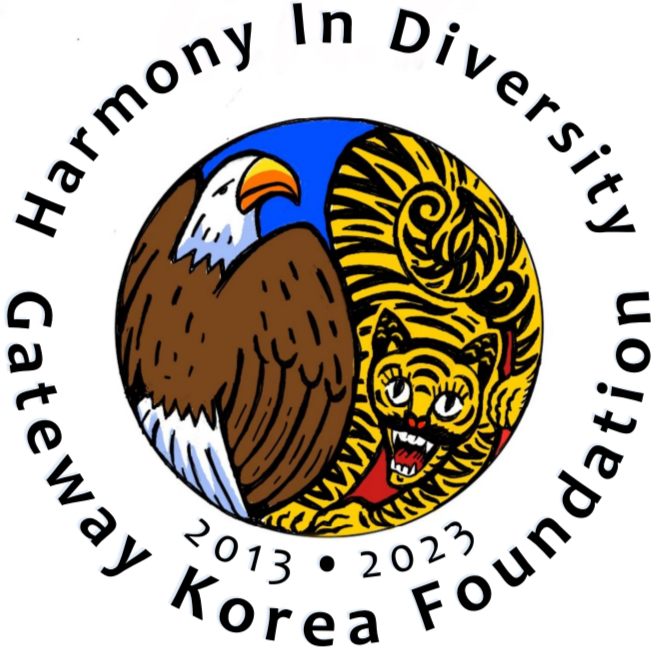HALLYU (KOREAN WAVE)
Source : KOCIS Date : 2018-09-20
The material below is provided by the Korean Culture and Information Service (https://www.factsaboutkorea.go.kr/bbs/view.do?ln=en).
A term now widely used to refer to the popularity of Korean entertainment and culture across Asia and other parts of the world, Hallyu or the “Korean Wave” first appeared during the mid-1990s after Korea entered into diplomatic relations with China in 1992 and Korean TV dramas and pop music gained great popularity in Chinese-speaking communities. When one of the first successful TV dramas, What Is Love?, was aired by CCTV in 1997, it had an audience rating of 4.2%, meaning that over 150 million Chinese viewers watched it.
Korean pop music, especially dance music, began to gain popularity among Chinese teenagers after it was introduced in earnest in 1997 by a radio program called Seoul Music Room broadcast from Beijing. The decisive moment in igniting Korean pop culture fever in China was the concert of Korean boy band H.O.T., held at the Beijing Workers’ Gymnasium in February 2000. Korean news reports used the term Hallyu, or the Korean Wave, in describing this concert. The Korean Wave, acknowledged in an article published by Beijing Youth Daily as early as November 1999, began to finally be recognized by Koreans themselves from this point.
BTS -In 2018, boy band BTS won the Top Social Artist Award at the Billboard Music Awards for two years in a row, becoming the first K-Pop act to do so. With their album, “Love Yourself: Tear,” topping the Billboard 200 albums chart and its track, “Fake Love,” landing in the 10th place on the Hot 100 singles chart, BTS has become the most successful Hallyu act since Psy.
The Korean Wave landed in Japan in 2003 when the KBS TV drama series Winter Sonata was aired via NHK. The drama became an instant mega hit, making its male hero, Yon Sama, a household name, compelling his enthusiastic Japanese fans to visit various film locations, including Namiseom Island, in Korea.The ‘Korean Wave’ craze has expanded to Korean traditional culture, food, literature and language, creating more and more enthusiasts. A great majority of Hallyu-related organizations are K-Pop fan clubs, but there are also various communities of people who are interested in Korean dramas, food, tourism, and more. As of December 2017, a total of 73.12 million people in 92 countries joined these organizations across Asia, Oceania, the Americas, Europe, Africa, and the Middle East.
TWICE, the first Korean girl group to achieve the milestone of reaching over 300 million views on YouTube
EXO, one of the most popular idol groups that have captivated the world with their perfectly in-sync group dances
K-Pop
One area that is growing more rapidly than any other is 21st century K-Pop, or Korean pop music, which spans dance-pop, pop ballads, techno, rock, hiphop, R&B, and so on. First gaining popularity in East Asia, K-Pop entered the Japanese music market towards the turn of the 21st century, and grew from a musical genre into a subculture among teenagers and young adults of East and Southeast Asia. Currently, the spread of K-Pop to other regions of the world, via the Korean Wave, is seen in parts of Latin America, Northeast India, North Africa, the Middle East, Eastern Europe and immigrant enclaves of the Western world.
The rise of K-Pop on the global stage is probably best represented by Psy’s Gangnam Style, which swept the world as soon as it was released in late 2012. The song was the first K-Pop title reach No. 1 on the British Official Singles Chart, took 2nd place on Billboard’s Hot 100 in the US, and also topped the charts in more than 30 countries, including France, Germany, Italy, Spain, Russia, Canada, and Australia. The YouTube video of the song has been watched by more than any other, with over 3 billion since music video was released on July 15, 2012.
The worldwide success of “Gangnam Style” was preceded by a surge of K-Pop idol groups. Currently, there are more than 150 idol groups in South Korea such as Big Bang, Girls’ Generation, 2PM, EXO, Wanna One, and BTS. TVXQ, who has countless loyal fans in Japan and Hong Kong, finally reunited in 2017, after the members completed their mandatory military service. In 2009, the five-member girl group, Wonder Girls, made inroads into the US market and became the first Korean idols ever to crack the Billboard Hot 100 chart with the song “Nobody”; unfortunately, the group disbanded in 2017.
Over the recent years, K-Pop acts have experienced a change of generations, from second-generation idols, namely Girls’ Generation and Big Bang, to third-generation idols, like BTS and TWICE, who actively utilize social media. The K-Pop genre has also diversified with the emergence of the indie scene.
In May 2018, BTS topped the Billboard 200 albums chart and won the Top Social Artist Award at the Billboard Music Awards for two years in a row. BTS is rewriting the history of K-pop with the fervor of their dedicated fans, who are collectively known as ARMY.
The popularity of K-Pop singers is largely based on their excellent vocal abilities, dazzling stage presence and well-choreographed, impeccable dance performances among other things. While they may look comfortable and charismatic on stage, their performance is the result of many years of hard work rather than any inborn talent.
Le Monde, the world-renowned French daily newspaper, ran a headline story titled, “K-Pop Arrives in France,” with high praise for BTS’s performances.
The Great Escape, a music festival held in Brighton, England, on May 18, 2017, staged “K-Pop Night Out,” which featured diverse genres of K-pop music, not just limited to idol groups. It was an opportunity for a wide variety of Korean artists to garner attention from international media and audience. The Great Escape, one of the major music festivals in Europe, has showcased star musicians including Adele, Ellie Goulding, and Ed Sheeran.
BTS created a K-Pop sensation that had never before been witnessed in the US market. In the US, where K-Pop is still far from the mainstream, scenes of American fans singing along in Korean and waving placards with Korean writing were enough to surprise the world. Their appearances not only at the Billboard Music Awards but also on three major US talk shows, such as The Ellen DeGeneres Show, received a lot of attention from Americans and Koreans alike. Just four years since their debut, BTS has become the most successful K-Pop act in the world.
In May 2018, the 2018 Dream Concert brought leading K-Pop stars together, much to the excitement of their global audience. An all-star lineup, including SHINee’s Taemin, Red Velvet, NCT, GFriend, Mamamoo, and Astro, heated up the stage of the biggest K-pop concert in Korea.
This year’s star-studded lineup and special performances did not fail to capture the eyes and ears of K-Pop fans in Korea and abroad. Living up to its 20-year reputation, many international fans flock to Korea for the Dream Concert every year.
TV Dramas
The great overseas success of What Is Love? (MBC) and Winter Sonata (KBS) in China and Japan played an important role in boosting the craze for Korean TV dramas across Asia and beyond. These hits were followed by Dae Jang Geum (MBC), an epic TV series about an orphaned kitchen cook who went on to become the King’s first female physician. Originally aired between 2003 and 2004, the drama became one of the highest-rated TV dramas in Korea before being exported to 91 countries around the world—including the Islamic states like Iran where it received as much as 80% of the viewers—to fascinate viewers with its portrayal of traditional Korean culture such as Korean Royal Court cuisine and traditional costumes and medicinal knowledge.
The drama was particularly popular in the Middle East, most notably in Iran, where it received an average viewership rating of 57% and a peak of 90%. Dae Jang Geum was exported to countries around the world, including Asia, North America, Europe, and the Middle East—from Japan and Egypt to Mexico and Poland—earning around KRW 13 billion.
The significance of Dae Jang Geum goes beyond the show itself as it is believed to have contributed to expanding the scope of Hallyu to Korean cuisine, fashion, and medicine. The drama’s production inducement effect is estimated to have reached KRW 111,9 billion.
In 2013, dramas, like My Love from the Star and That Winter, the Wind Blows, were loved by international fans, while in 2016, Dokkaebi (Guardian: The Lonely and Great God), Moonlight Drawn by Clouds, and Descendants of the Sun revived the Hallyu craze.
Dokkaebi, which refers to a mythical Korean goblin, opened a new chapter in fantasy dramas.
In 2014, the success of the SBS drama, My Love from the Star, which was sold at USD 40,000 per episode to China, led to the increased popularity of Korean dramas. Subsequently, the price for the distribution rights of Korean dramas skyrocketed in China.
The 2016 TV drama, Descendants of the Sun, was dubbed “Taehu (an acronym from the show’s Korean title) Syndrome” and was sold to 27 countries including the United Kingdom, France, the United States, Japan, and China, posting a profit of over KRW 10 billion.
In September 2017, Korea was invited as the honorary guest country (Invitée d’honneur) to Festival de la Fiction TV, a French drama festival attended by directors and producers of popular Korean drama series. A total of three Korean dramas were invited—MBC’s W, tvN’s Signal, and JTBC’s The Package.
Descendants of the Sun, drew an audience share of over 30% in Korea.





